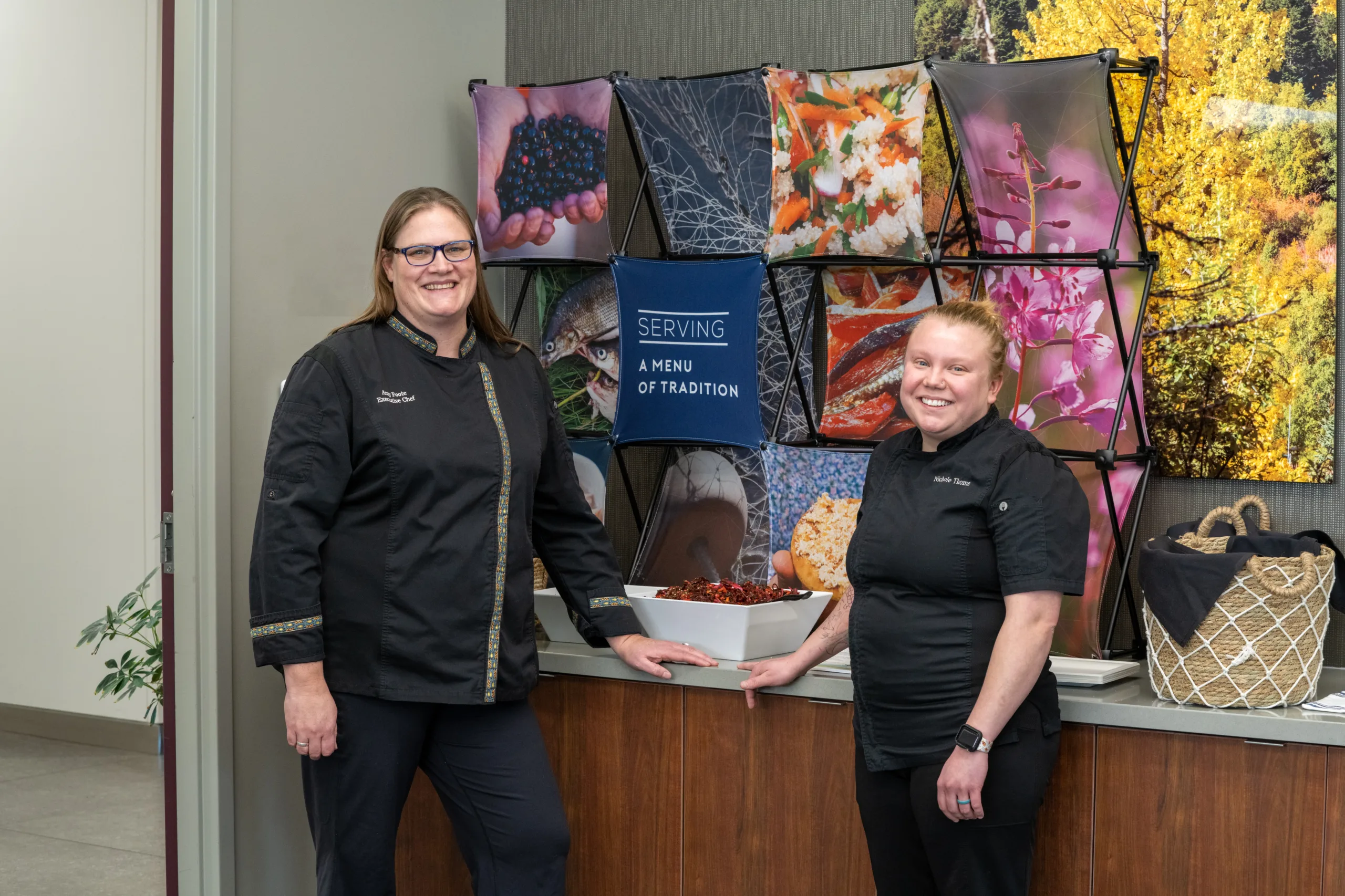
This fall, CIRI staff were treated to a traditional foods presentation and cooking demonstration by Amy Foote, executive chef at the Alaska Native Medical Center (ANMC). The Raven’s Circle sat down with Chef Amy to discuss the challenges and rewards of sourcing traditional ingredients, the role of diet in disease prevention and management, and connecting with culture through food.
Where did you grow up? Were you raised in or around Indigenous culture?
I grew up in Idaho, and there are many Indigenous people in that area. My family relied heavily on growing and harvesting. But it was really when I came to Alaska that I learned about plants not only as food, but as medicine. There are so many folks along the way who have shared their knowledge with me, such as Meda DeWitt (Tlingit traditional healer) and Dr. Gary Ferguson (Unangax^). Anytime anybody will let me come and learn, then I’m there. I’m all over it.
What interested you specifically in cooking and the culinary arts?
I hold an associate degree in culinary arts from Boise State University, and I worked in hotels and freestanding restaurants and lodges over the years. When you’re a restaurant chef, it’s all about how the food looks and tastes. At ANMC, those things are important too, but it’s also about where your food comes from, what emotions it conjures up, and how it honors your ancestry. I feel gifted to have been given this opportunity.
What are some of the specific challenges associated with working in a hospital?
One is volume—we serve about 5,000 meals out of our kitchen per day. We’ve got a lot going on, a lot of moving parts and pieces. And in a hospital, they take away all your “cheats”—your salt, fat, sugar. We have to figure out how to create healing, nutrient-dense foods that also taste good. We use marine plants that have natural sea salt instead of boxes of kosher salt. Fruits and berries for sweetness.
Can you tell us about ANMC’s donation program for hunted and gathered foods?
We create our menus using about 60% traditional ingredients. Our traditional foods program is seasonal, much like a subsistence lifestyle. Some years we get herring eggs, and some years we don’t. We haven’t gotten a moose donation this year and last year we were heavy in moose. Last year we had one caribou, and this year we’ve had seven. It doesn’t have to be the whole fish, the whole animal—we’ll take the bones, the organs, the head. If you fish and you don’t keep your heads and your eggs and your spines, you can donate them to the hospital. We’re always thinking creatively about how we can stretch an ingredient.
More than one-third of CIRI’s Shareholders live outside Alaska. Do you have advice for people who want to connect with culture through food who live outside the state?
There are Indigenous peoples throughout North America, so the key is learning the culture and the environment you’re in. The other way is to purchase things. Seaweed farming is huge right now. You can purchase jams, jellies, teas, smoked and cured fish, dried meat. There are a lot of opportunities to highlight Indigenous foods, but there are challenges too. Many traditional recipes aren’t written down, which makes it even more important to stay connected with family and culture because so much knowledge is passed down through word of mouth.
If you are interested in donating hunted or gathered foods to the inpatient food service program at the Alaska Native Medical Center, call (907) 729-2682 or email nativefood4life@anthc.org. For more information, including a list of accepted donations and a current “wish list,” visit the ANMC website.



